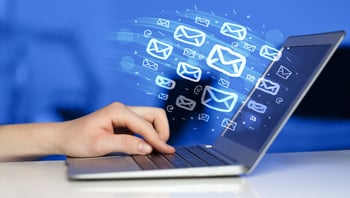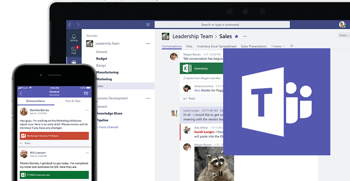As Geek Pride Day flies toward us at hyper (or warp, for you Star Trek fans out there) speed, we decided to join in the fun with a blog about the “geeky” technological innovations we all have come to love today.
The iconic holiday is celebrated on May 25 in honor of the May 25, 1977 release of Star Wars film “Episode IV: A New Hope,” and has become a catch-all holiday celebration for fans of just about any “geek” culture franchises and series, including “The Hitchhiker’s Guide to the Galaxy” (in celebration of “Towel Day”) and Terry Pratchett’s “Discworld” (in celebration of “The Glorious 25th of May”).
To celebrate the holiday, we've put together a list of the top five coolest and “geekiest” technology innovations that users around the world have come to love.
1. Smart Watches
When it comes to technology, Apple and Google have been locked in a strong competition with to see which company can come out with the most advanced tech. In April 2015, Apple released its first incarnation of the Apple Watch, a smartwatch that has dominated the wearable technology market for three years.
Google followed suit with the release of WearOS, its own line of wearable technology. However, the company recently announced the upcoming release of Google Pixel, its own version of a smartwatch that tech reviewers are proclaiming may be able to compete with Apple like no other company in the wearable tech space.
2. Glass Enterprise Edition
Looking “smart” has never been more useful than with “Google Glass 2.0,” or what is properly known as Glass Enterprise Edition. But, rather than reaching out to the general masses like it’s previous incarnation, which was plagued by bugs and other issues, this take on the innovative spectacle technology has a new focus: factories and warehouses.
These smart glasses are now being employed in manufacturing work environments. This lightweight technology provides workers with real-time information available while also enabling them to keep both hands free to work on the tasks at hand.
3. Google Pixel Buds
This wearable technology isn’t your usual pair of earbuds. Rather than simply standing in for conventional speakers, Pixel Buds are used to provide virtually real-time language translation for users. It’s the equivalent of carrying around a universal translator from Star Trek in your pocket, only without the sleek, metallic look of Captain Picard’s combadge.
The devices work via Google’s Pixel smartphones and the use of the Google Translate mobile app. One user will wear the earbuds and the other will hold the phone. When the person wearing the earbuds speaks, it will translate the conversation to the person holding the phone and vice versa.
4. Biometric Authentication
For many, it can have a “spy thriller” kind of feeling to be able to use your fingerprint or facial scan to access your laptop or mobile device. However, that’s what millions of users are enjoying while using the facial recognition technology that comes installed on iPhone X devices, known as Face ID. Although biometric technology has been around for many years, the iPhone release of the facial recognition software took the tech to a whole new level and released in on a much larger scale than ever before achieved.
Biometric authentication like this is just one form of two-factor authentication (2FA), which has had a major impact on the IT services and computer technology industries.
5. Raspberry Pi
Raspberry Pi, a miniature computer technology that is no larger than the size of a credit card, is a versatile technology with virtually limitless applications. Pi was created to encourage and facilitate interest and learning in computer programming in people of all ages (although it was initially designed for kids). This technology can be used in a variety of applications, including robotics and automation, security, cameras, and computers — although, this list is just the tip of the iceberg.
An issue with this technology, though, is that it is highly vulnerable without proper protections in place. These kinds of security gaps also can frequently be found in many technologies used by businesses around the world. In the cases of businesses and other organizations, though, they can turn to a managed security services provider, like FPA, to help identify and close those gaps.
A few other noteworthy geeky and innovative technologies that have picked up growing traction in the public and commercial sectors include:
- 3D printing, or what is also known as additive manufacturing,
- Drones, and
- Virtual reality (VR).
What are some of the top geekiest technologies you would include in the rankings? Be sure to share your thoughts and recommendations in the comments section below or send me an email to chat about this more in-depth.
/fpa-logo-tagline.gif)






